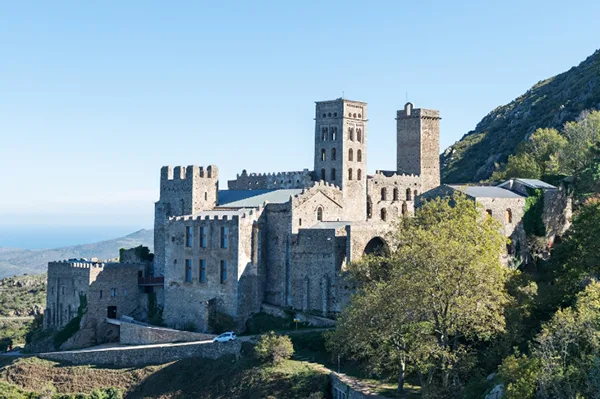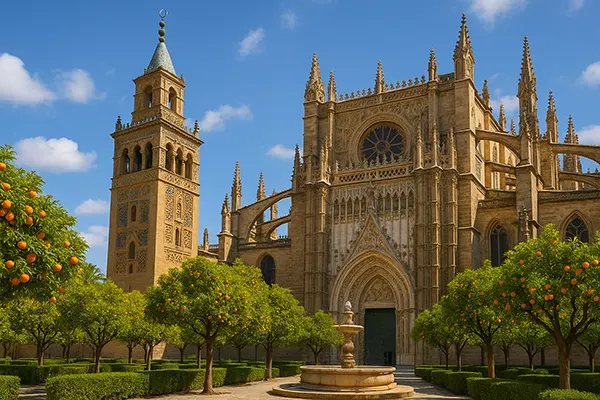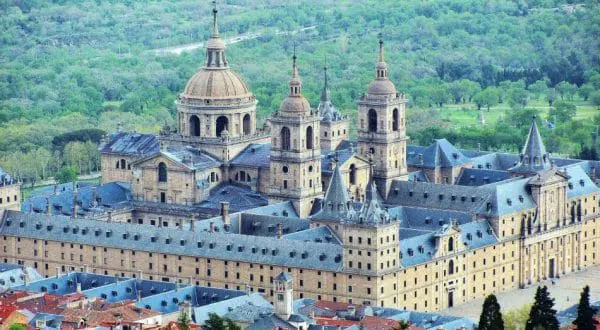Secrets of Forgotten Monasteries: 5 Lesser-Known but Enchanting Locations in Spain

Spain’s sacred heritage is not just about the Alhambra or Montserrat. Hidden among its rugged cliffs and quiet forests are forgotten monasteries, once vibrant with monastic life, now offering travellers peace, beauty, and historical mystery. These off-the-radar sanctuaries are the perfect escape for those who want to explore something more authentic and unspoiled.
Monastery of Sant Jeroni de Còbera – A Silent Witness in the Mountains of Girona
Located in the Les Salines mountain range, the Monastery of Sant Jeroni de Còbera is a forgotten gem that once served as a refuge for hermits and monks. Built in the 13th century, its stone remnants cling to the hillside with a solemn elegance that hints at centuries of solitude and prayer. Although nature has taken over much of the site, key structures like the apse and stone archways remain intact.
This site is not signposted on tourist maps, making it ideal for those seeking to avoid the crowds. Access involves a modest hike through pine forests, rewarding visitors with stunning panoramic views of the surrounding Catalan landscape. Despite its decayed state, the monastery evokes a sense of stillness and resilience, as if it’s still watching over the land it once served.
Local conservation efforts have ensured that the ruins are protected from further erosion, though it remains largely untouched. History lovers and photographers will find it particularly rewarding, not just for its haunting beauty but also for its authenticity, far removed from Spain’s bustling tourist zones.
Spiritual Echoes in a Remote Sanctuary
What makes Sant Jeroni de Còbera truly remarkable is its persistent aura of calm. The absence of information panels or souvenir shops enhances the spiritual connection visitors can forge with the place. Silence dominates the experience here, punctuated only by the whisper of wind through the trees.
There’s a deep contrast between the fragility of the ruins and the strength of the natural surroundings. The monastery appears to grow from the very rock it’s built on, blending in with the moss and lichen now covering its walls. This seamless connection to nature reflects the simplicity and devotion of its former inhabitants.
Visitors often describe a profound stillness upon arriving – not eerie, but comforting. It’s a space that encourages reflection, perhaps a nod to its original purpose as a retreat from worldly distractions.
The Forgotten Cloisters of Santa María de Bonany – A Spiritual Refuge in Castellón
Nestled within the lesser-travelled province of Castellón, the ruins of Santa María de Bonany are another hauntingly beautiful example of forgotten religious architecture. Although little documentation remains, local lore suggests the monastery served as a humble haven for women seeking spiritual refuge in the 15th century.
Today, only partial structures remain – portions of the cloisters, fragments of walls, and outlines of what may have once been a chapel. Overgrown with wildflowers and surrounded by olive groves, the monastery blends almost entirely with the landscape. It’s this harmony that gives Bonany its unmistakable charm.
While there’s no official access route, locals in nearby villages often share tips on how to reach the ruins. The absence of commercialisation allows for a more genuine connection with the site and its quiet surroundings. It’s a peaceful, almost meditative location ideal for slow exploration.
Layers of History in Rural Silence
Bonany’s ruins are not grand, but they speak volumes. The site invites visitors to reflect on the modesty of early religious communities, whose lives were far removed from luxury and spectacle. Each crumbled stone seems to hold a story of resilience and faith.
In spring, the site becomes even more enchanting, as poppies and almond blossoms soften the sharp lines of the ruins. Wildlife is abundant, with lizards basking on stones and birds nesting in the crevices of fallen arches. Nature and history coexist here in perfect balance.
The monastery is particularly beloved by local artists, who come for inspiration and solitude. Sketches, paintings, and even poetry inspired by Bonany often circulate in nearby artisan markets, keeping its legacy alive in an unexpected way.

San Pedro de Arlanza – Echoes of Power in Burgos’ Hidden Valley
Although more structurally intact than the previous sites, the monastery of San Pedro de Arlanza remains surprisingly under-visited. Once one of the most influential Benedictine monasteries in Castile, its isolated location in the Arlanza River valley has helped preserve it from mass tourism.
Founded in the 10th century, this site holds massive historical significance – considered the cradle of the Castilian language and identity. Visitors can still observe intricately carved capitals, partially preserved frescoes, and vast arches that hint at its former splendour. Despite its semi-ruined condition, the grandeur of Arlanza still shines through.
Recent conservation works have stabilised parts of the structure, making it safe to explore. However, its remote setting and limited infrastructure keep it well off the beaten path. For travellers interested in medieval Spanish history, Arlanza offers an unforgettable experience.
A Testament to Faith and Kingdoms
The monastery’s location, nestled between steep cliffs and the riverbank, offers not only historical richness but also natural beauty. Hiking trails lead visitors to hidden viewpoints overlooking the entire valley, ideal for photography and birdwatching.
Inside the ruins, one can still feel the gravity of its past importance. Stone inscriptions and sculptural elements whisper tales of kings, monks, and pilgrims who once walked its halls. The juxtaposition of ruined majesty and wild vegetation creates an atmosphere both powerful and poetic.
Arlanza’s story continues in local legend, passed down in oral traditions that add an extra layer of mystique to any visit. While no longer in use, its spirit lingers, a powerful reminder of Spain’s ecclesiastical past.




